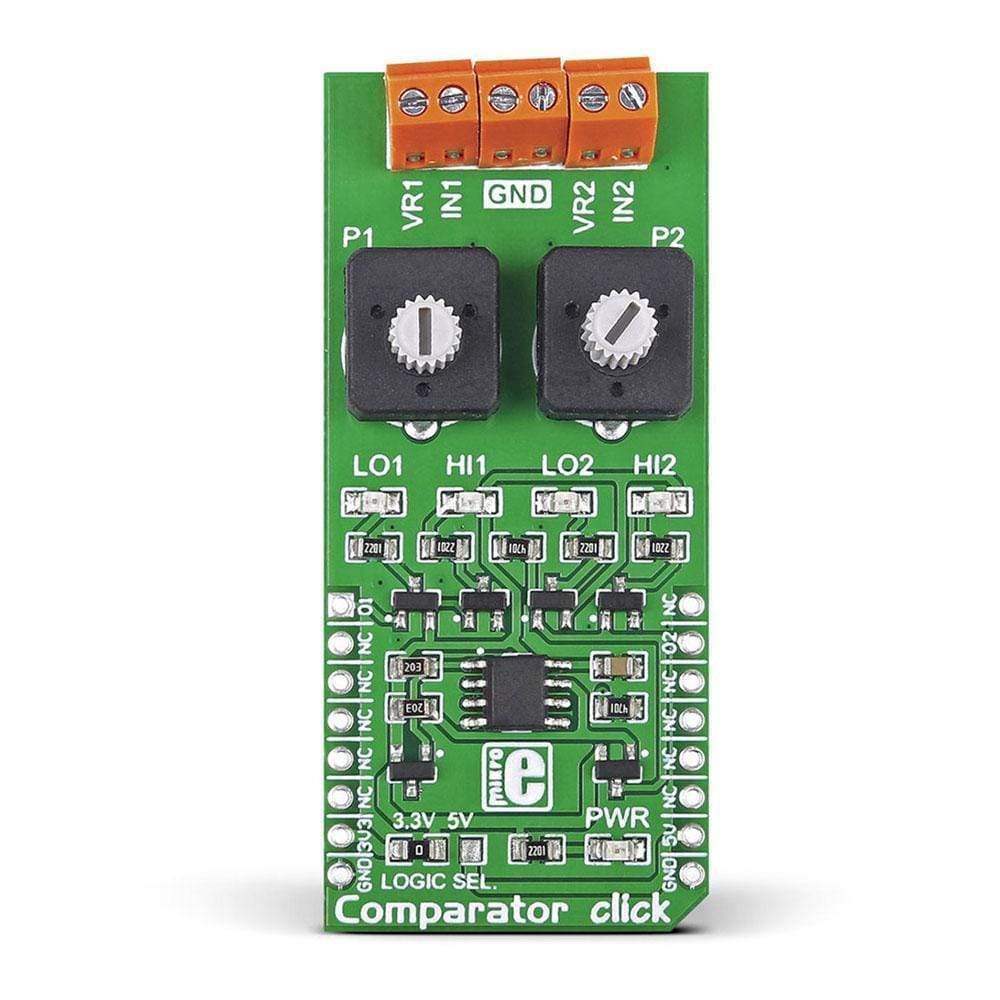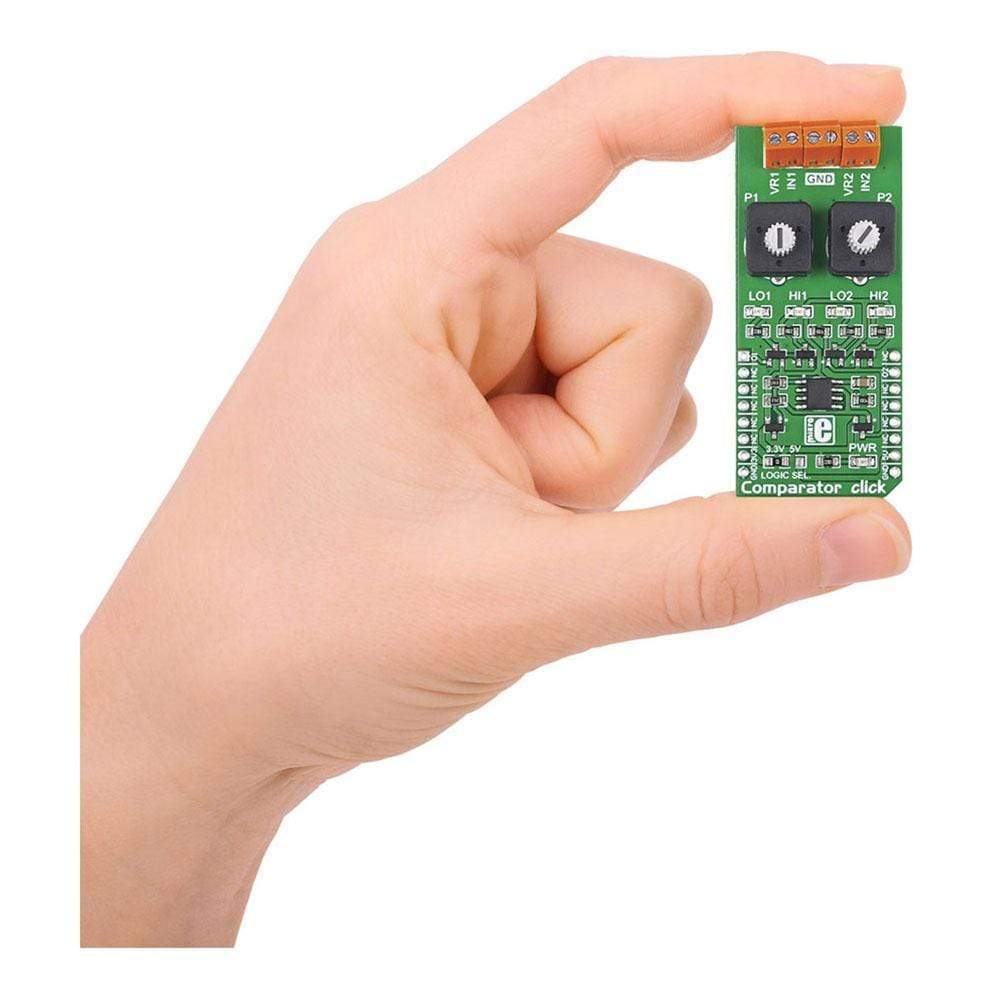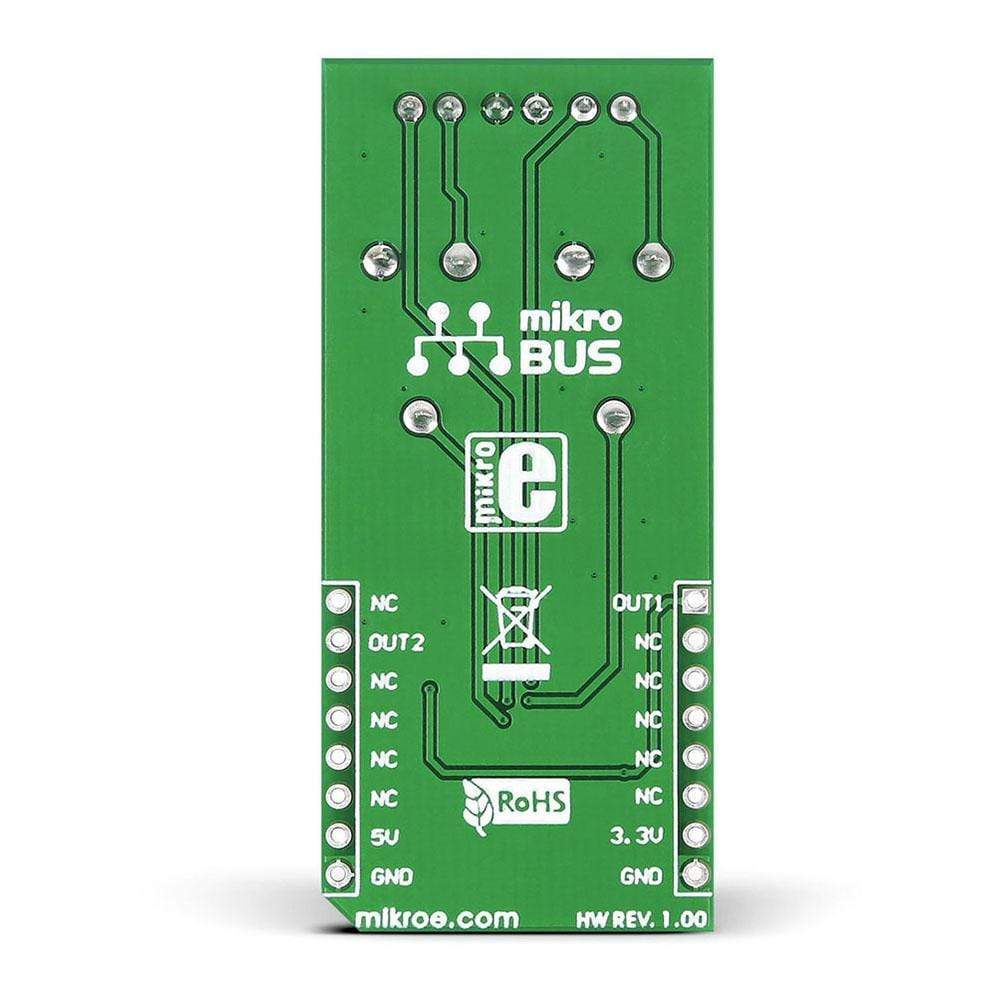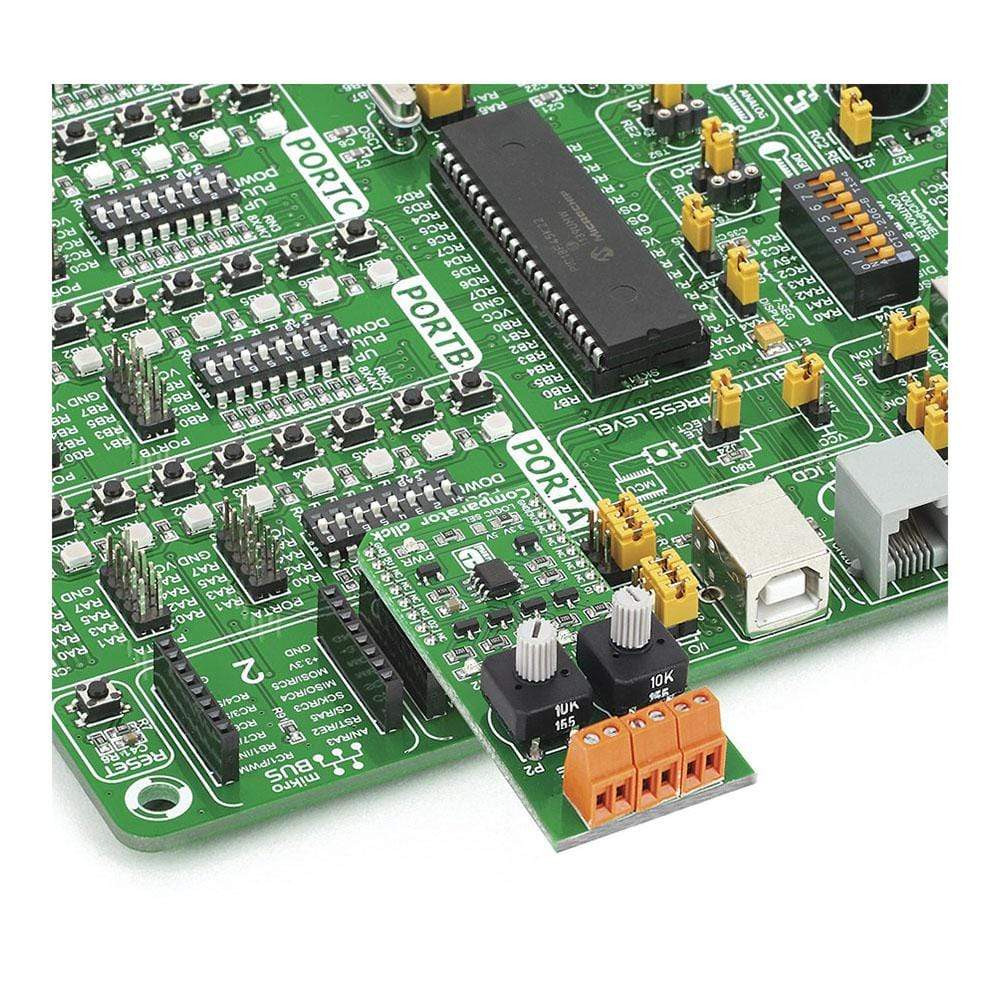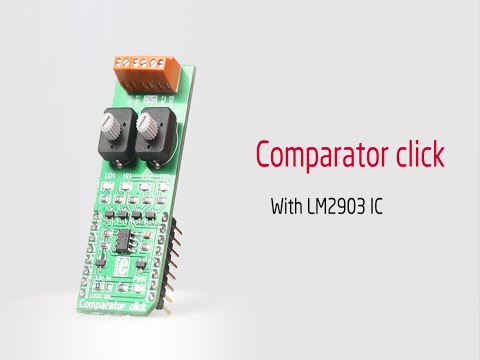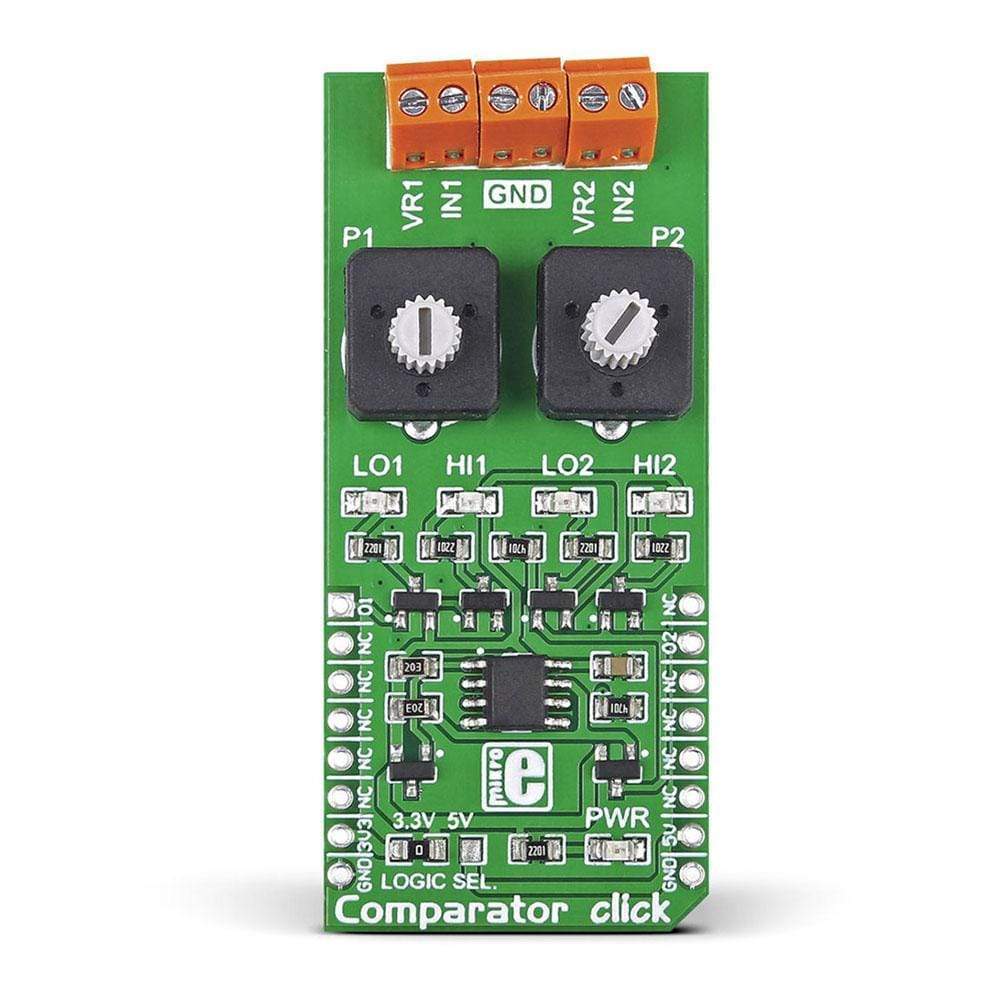
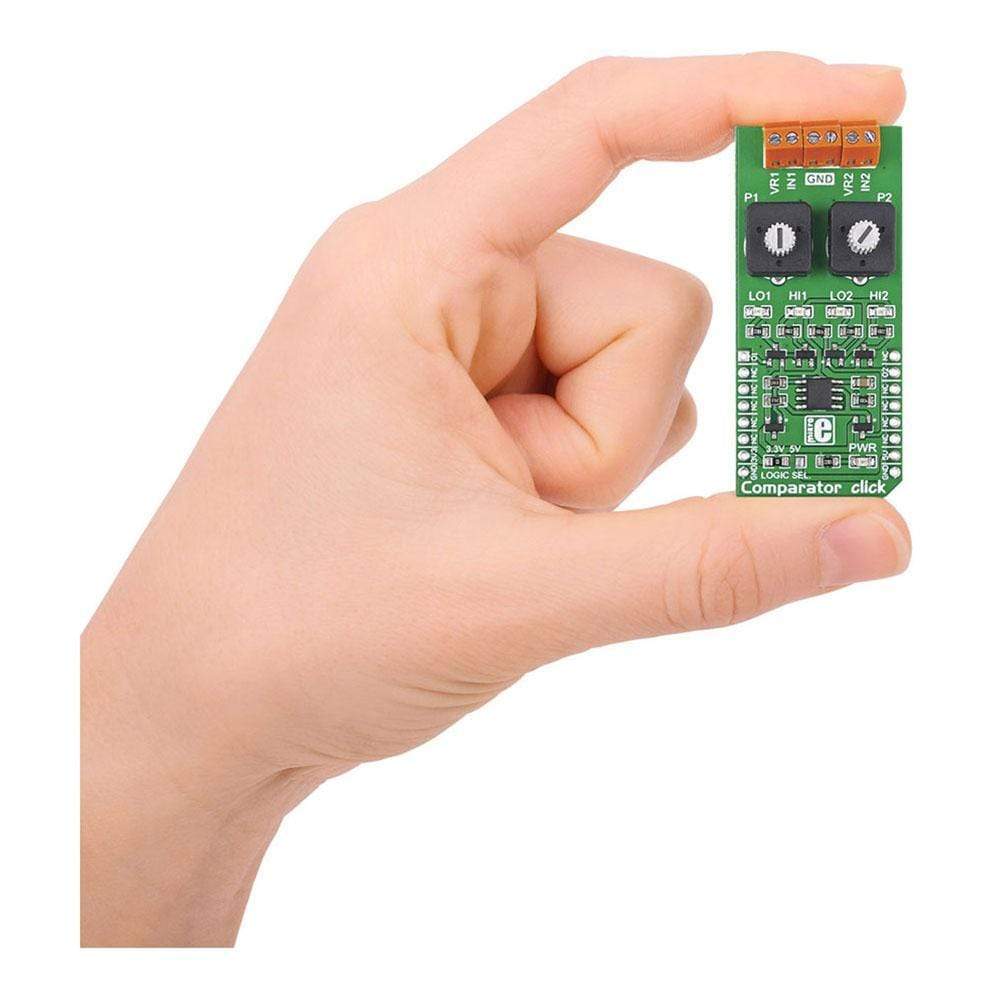
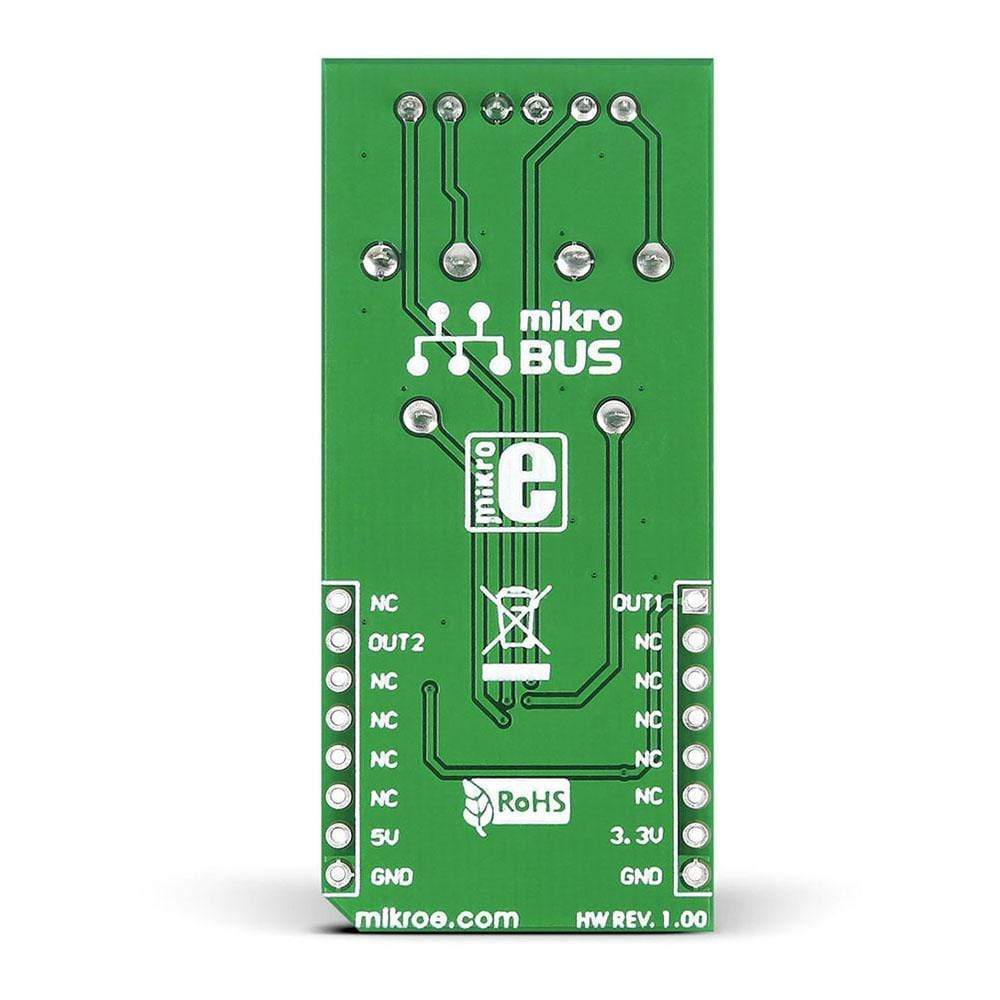
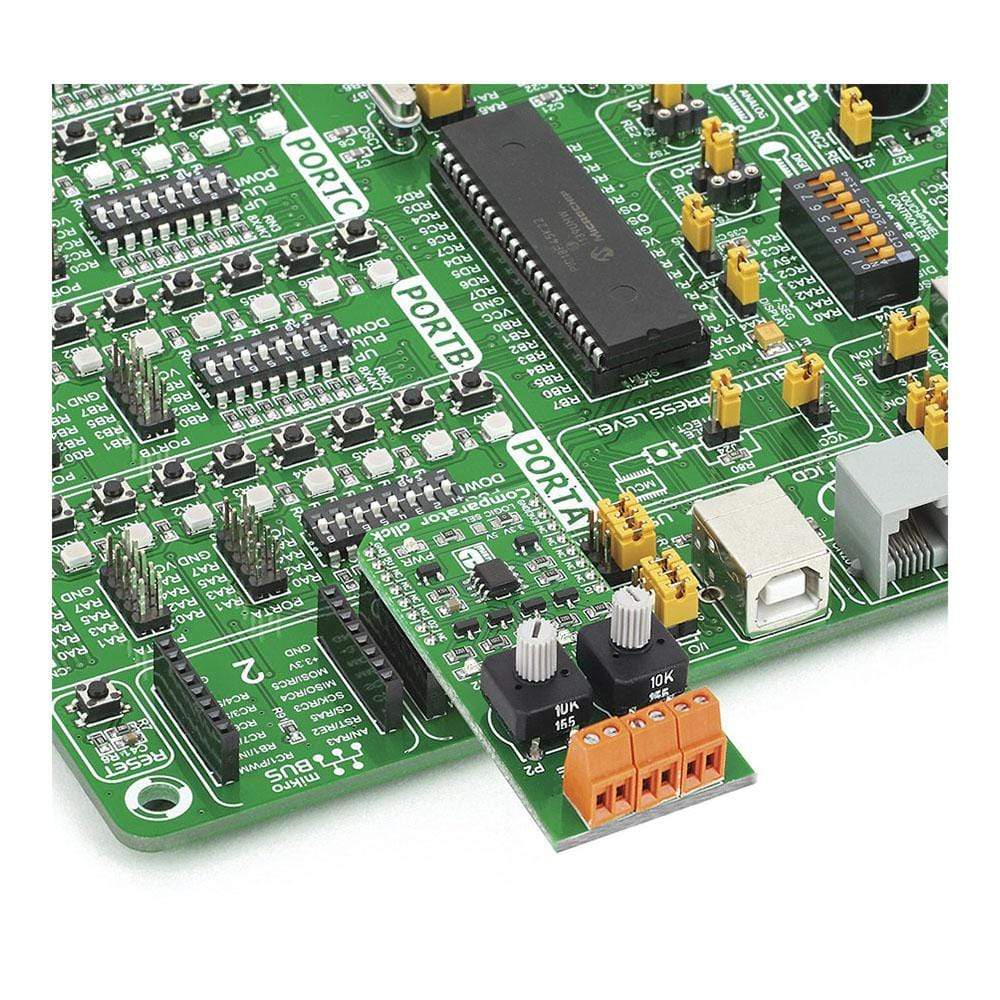
Overview
The Comparator Click Board™ from MikroElektronika is a voltage comparator on a Click Board™ add-on board carrying an LM2903 precision voltage comparators. This LM2903 IC features two independent voltage comparators, two pairs of screw terminals (additional two screw terminals are for GND connections), and two potentiometers.
It can be used with either a single or dual power supply over a wide range of voltages. The screw terminals allow the user to connect separate inputs, while the two potentiometers, placed between the screw terminals and the IC, configure the setpoint voltage. Each input has its own interrupt pin on the socket, i.e., one through the MikroBUS INT pin, the other in place of the default MikroBUS AN pin.
The Comparator Click Board™ is designed to use either a 3.3V or a 5V power supply.
Downloads
Das Comparator Click Board™ von MikroElektronika ist ein Spannungskomparator auf einer Click Board™-Zusatzplatine mit einem Präzisionsspannungskomparator LM2903. Dieser LM2903 IC verfügt über zwei unabhängige Spannungskomparatoren, zwei Schraubklemmenpaare (zwei zusätzliche Schraubklemmen sind für GND-Verbindungen) und zwei Potentiometer.
Es kann mit einer einzelnen oder doppelten Stromversorgung über einen weiten Spannungsbereich verwendet werden. Die Schraubklemmen ermöglichen dem Benutzer den Anschluss separater Eingänge, während die beiden Potentiometer zwischen den Schraubklemmen und dem IC die Sollspannung konfigurieren. Jeder Eingang hat seinen eigenen Interrupt-Pin am Sockel, d. h. einer über den MikroBUS INT-Pin, der andere anstelle des standardmäßigen MikroBUS AN-Pins.
Das Comparator Click Board™ ist für die Verwendung einer 3,3-V- oder einer 5-V-Stromversorgung ausgelegt.
| General Information | |
|---|---|
Part Number (SKU) |
MIKROE-1915
|
Manufacturer |
|
| Physical and Mechanical | |
Weight |
0.03 kg
|
| Other | |
Country of Origin |
|
HS Code Customs Tariff code
|
|
EAN |
8606015076614
|
Warranty |
|
Frequently Asked Questions
Have a Question?
Be the first to ask a question about this.

